2019 Honda Ridgeline Long-Term Update: 4 Months and 5,000 Miles
Auto high beams were not the feature I thought I’d miss when our family switched from a 2018 Honda Odyssey to a 2019 Honda Ridgeline. I spent more than three decades living in urban environments. High beam use was limited to vacations or weekend getaways in country idylls.
Even after three years of rural life, auto high beams still seemed to me to be just a frivolous luxury. At least they did, until we gave them up in the switch to the Ridgeline, which isn’t the top-spec model needed to acquire the auto high beams. It was a switch that occurred during some of the longest days of the year, when there are roughly 16 hours between sunrise and sunset on Prince Edward Island.
Now the daylight hours are shrinking and I am forced to repeatedly push and pull a signal stalk forward and back with the sheer strength of an index finger, like some sort of penurious Suzuki Equator driver. It’s cruel and unusual punishment, that’s what it is. DIY high beam engagement may well be an enhanced interrogation technique, the details of which have not yet been uncovered in a David Shepardson exposé.
Fortunately, almost everything else about the 2019 Honda Ridgeline has fostered an increasingly contented ownership experience, the likes of which I’ve ever encountered in a 5,000-mile/4-month test.
That’s not to say the Ridgeline is perfect. As mentioned in our long-term intro, the styling is soft, the infotainment unit is outdated, and rear-seat legroom could be better.
But all of the aspects of the Ridgeline we appreciated when our family first spent time with a 2017 model – plus all of the appealing elements we valued on multiple test drives in previous years – are of greater value than we anticipated. Five areas stand out.
POWERTRAIN
RIDE
ARMREST
EFFICIENCY
Changes in lifestyle removed the necessity of our van’s third row. The frequently snow-covered roads in central PEI led us to believe all-wheel drive would be a nice bonus. Addictions to powersports make a truck, even if it is more “truck” than truck, a better everyday companion.
No, we weren’t thrilled when our first attempt at towing went awry. The 7-pin hookup to our trailer produced light but no signals or brakes, and we confirmed with a friend’s truck that the trailer wasn’t the problem. After digging sifting the fuses and the diagram, I eventually needed the dealer to discover a fuse that was presumably ineffective from the manufacturer.
But if that’s the rather trivial type of trouble we’re going to find from our Ridgeline, we can live with it. To date, we’ve only made one change to the truck. It’s no Yakima Gatekeeper or trendy Evoc tailgate pad, but this $149 SportRack piece from (where else?) Canadian Tire was way cheaper. It still has the velvety soft inner lining, although the attachment of the accompanying straps requires more time than on the more expensive options. If you’re hauling mountain bikes to the trails, a tailgate pad saves a lot of trouble. We can easily stand five or six bikes upright in less than a minute and be on our way.
There are now three upgrades planned. The first is a definite installation this fall: an aftermarket tri-fold tonneau cover. The second, a leveling kit, is entirely unnecessary but quite affordable, and it helps beef up the Ridgeline’s soft front-end styling. The third requires turning the Ridgeline’s OEM wheels into our winter wheels after we shop for a more menacing set of alloys for the April-October stretch.
In our next update, we’ll discuss winter driving, which will be upon us all too soon.
Timothy Cain is a contributing analyst at The Truth About Cars and Driving.ca and the founder and former editor of GoodCarBadCar.net. Follow on Twitter @timcaincars and Instagram.
[Images: Timothy Cain, Honda]
More by Timothy Cain
Latest Car Reviews
Read moreLatest Product Reviews
Read moreRecent Comments
- Add Lightness I don't waste a lot of time watching nothing much happening by watching the YouTube 6 minute highlights.
- MrIcky from my rental fleet experience, id rather drive one of these than a camry.
- Add Lightness Protectionist fear competition under the guise of paranoia.
- Kjhkjlhkjhkljh kljhjkhjklhkjh But facebook, instagram, twitter, your cell phone, your chevy/ford/dodge, your debit card, your credit card selling your data to the SAME OVERSEAS DATABROKERS is ok.Meanwhile parler, telegram literally run on russian hardware is also ''ok''
- Redapple2 Dear lord ! That face. HARD NO.


















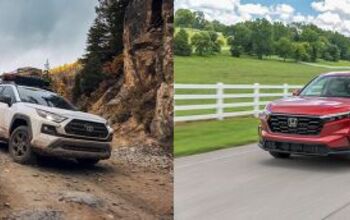


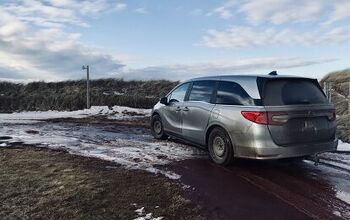



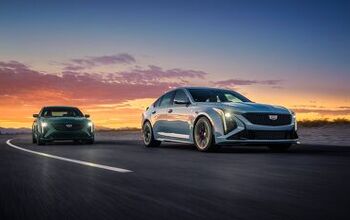
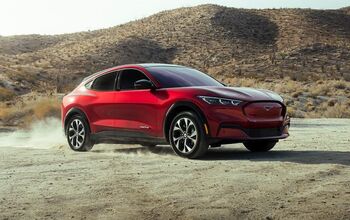


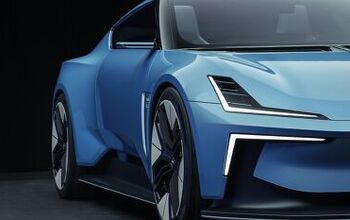






Comments
Join the conversation
I think it is more accurate to say that the Ridgeline is an Odyssey with the back cut off - the Pilot is shorter than the Ridgeline. I have seen a few current-gen Ridgeline with a bed cap - to me it makes it look a lot better, almost like a mini-Suburban. I had a first-gen Ridgeline and really enjoyed it. Gas mileage was not good, though. I struggled to get 17 mpg. I think the new styling is partly responsible for improved fuel economy, along with the 9-speed trans. I actually wish I had kept it, but oh well. Made a bad choice and traded it in on a Ram that we didn't need. I am considering getting a new Ridgeline as a long term keeper. But I am driving so little lately it doesn't make sense to get a new car just to have it sit in the garage depreciating. I don't see driving like I used to ever again. My 2005 Highlander has been very reliable and is paid for. At this rate I will be keeping the Highlander for a long time.
Forget about the Honda Ridgeline and make it easy for yourself and get a truck from one of the big three. Prreferrably from F or D. For the price of the ridgeline you can get auto climate, lights, seats, transfer case, and anything else auto that i forgot to mention. You can also choose from 3 different cabs, 3 different bed lengths, 5 or 6 different engines, 10 colours. You would think that the Ridgelines trump card would be superior fuel economy, but these full size trucks get similar fuel economy with twice as much payload and towing specs. As you can see, being a "Honda" guy, im so unimpressed with Hondas light truck entry.